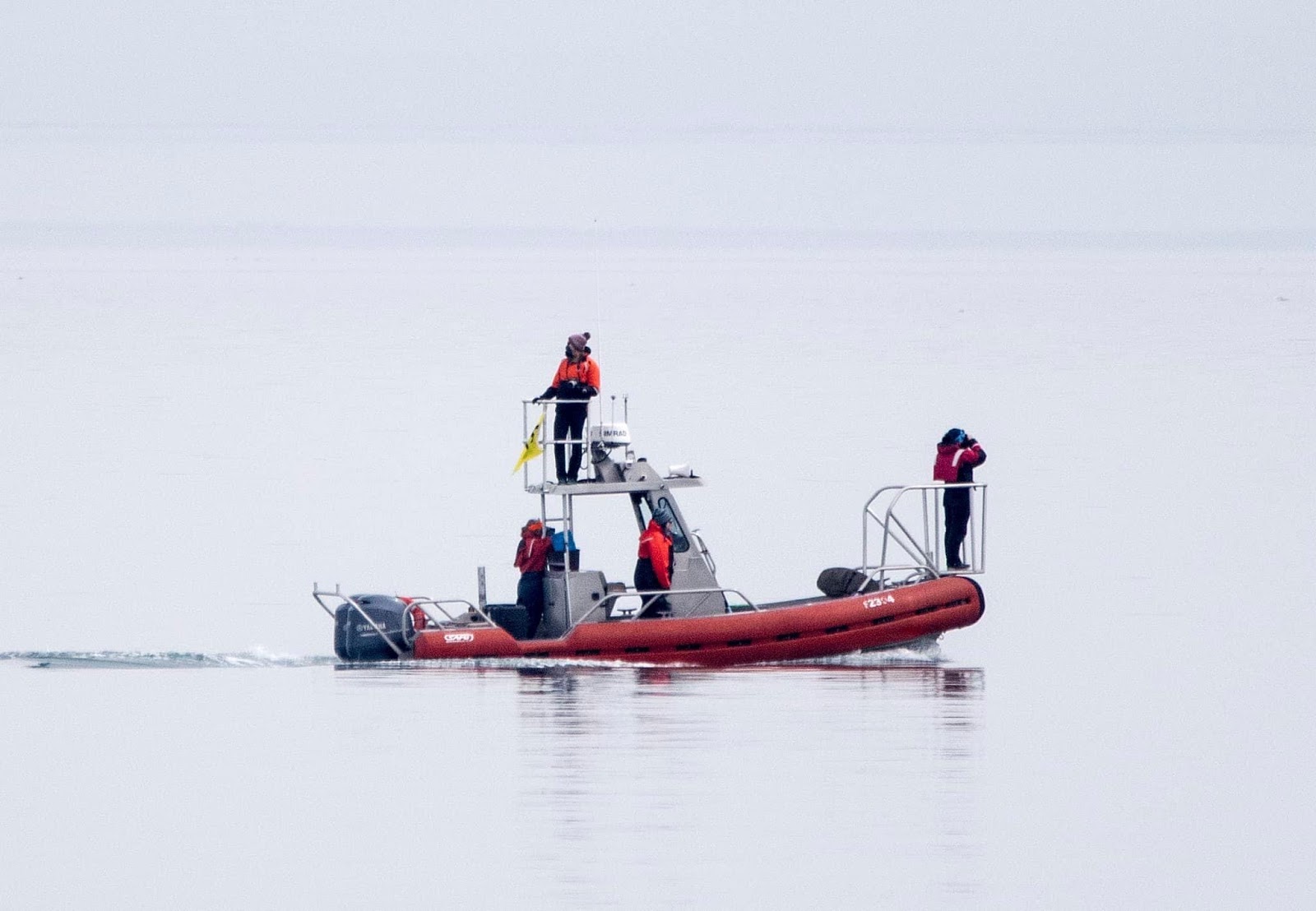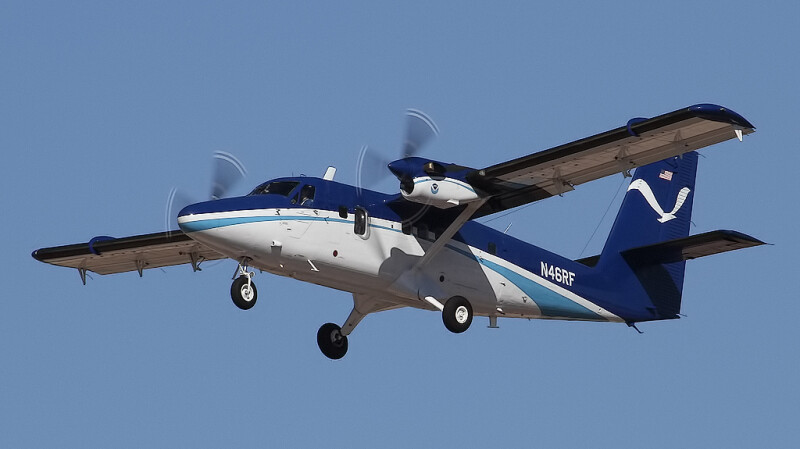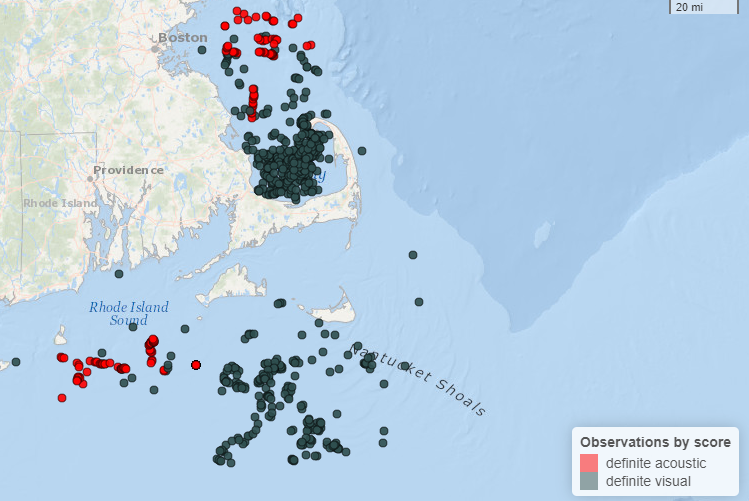Endangered northern right whales that have been arriving earlier in spring and staying longer around Cape Cod have also expanded their presence south and west of Nantucket Shoals, into areas planned for large-scale development of offshore wind power, according to the National Marine Fisheries Service.
Scientists from the NMFS Northeast Fisheries Science Center conducting surveillance flights spotted 57 fight whales March 30 off southeast New England, in and around wind energy areas that have been leased to developers by the federal Bureau of Ocean Energy Management.
NMFS officials said those whales included three mother-calf pairs – results from what experts have called the most successful calving season in years for the highly endangered species, with 17 young reported and nine mother-calf pairs sighted in Northeast waters in recent weeks. The entire population was last estimated to number around 366 animals.
Right whales typically appear in Cape Cod Bay during the spring, but in recent years they have been showing up sooner and lingering longer, according to a summary released April 15 by NMFS.
A small portion of the whale population, mostly pregnant females, migrates to waters off Georgia and northern Florida for the winter calving season, according to marine mammal researcher Tim Cole who leads the NEFSC whale survey team.
They track the rest of the population, “and have found them so far this year in large numbers on Nantucket Shoals south of Martha’s Vineyard and Nantucket, and in Cape Cod Bay,” said Cole.
Right whales follow their food sources during the season and have been seen surface feeding around Cape Cod, according to the Massachusetts Division of Marine Fisheries and the Provincetown, Mass., based nonprofit Coastal Research Center which jointly conduct survey flights. Their findings led Massachusetts officials to extend a 10-knot speed limit on small craft in Cape Cod Bay and fishing trap gear restrictions through mid-May.
With a series of right whale deaths in Canadian and U.S. waters during 2017, NMFS declared an “unusual mortality event" that has tallied 34 dead and 15 seriously injured right whales.
Ship strikes and fishing gear entanglement are the biggest threats and NMFS is implementing new lobster trap gear rules in U.S. waters to meet a May 31 federal court deadline.
The whales’ welfare is factoring into plans for wind energy development too. BOEM officials say seasonal restrictions and mitigation during pile-driving and other construction activity must be included in developers’ plans. Naval architects and shipbuilders constructing crew transfer and service operations vessels for turbine projects need to consider 10-knot speed limits when NMFS reports right whale movements near the wind energy areas.
In addition to aerial surveys NEFSC scientist Lisa Conger leads a team on Cape Cod Bay photographing right whales on the center’s research vessel Selkie. On March 22, the scientists sighted their first right whale mother-and-calf pair of the season in the bay.

The team, including another whale researcher from the New England Aquarium, takes photographs to use in identifying individual whales and collects small skin samples from whales to use for population genetic studies.
“We photograph each animal and then analyze the images to get a record of the numbers of individual animals here, how long they stay here, and what the population looks like in terms of males, females, and calves so we can follow the family tree, so to speak,” said Cole. “This year, 17 live calves were observed in the coastal waters off of the Southeast United States. To date, survey teams in the region have sighted at least nine of these mother and calf pairs this spring in the Northeast.”
The aerial surveys continue through June 15, when one of NOAA’s two de Havilland Twin Otter aircraft will be reassigned to another NEFSC project through the summer.
“Hopefully the Center for Coastal Studies and New England Aquarium will be able to fill in for us until we get the plane back in October,” said Cole.








